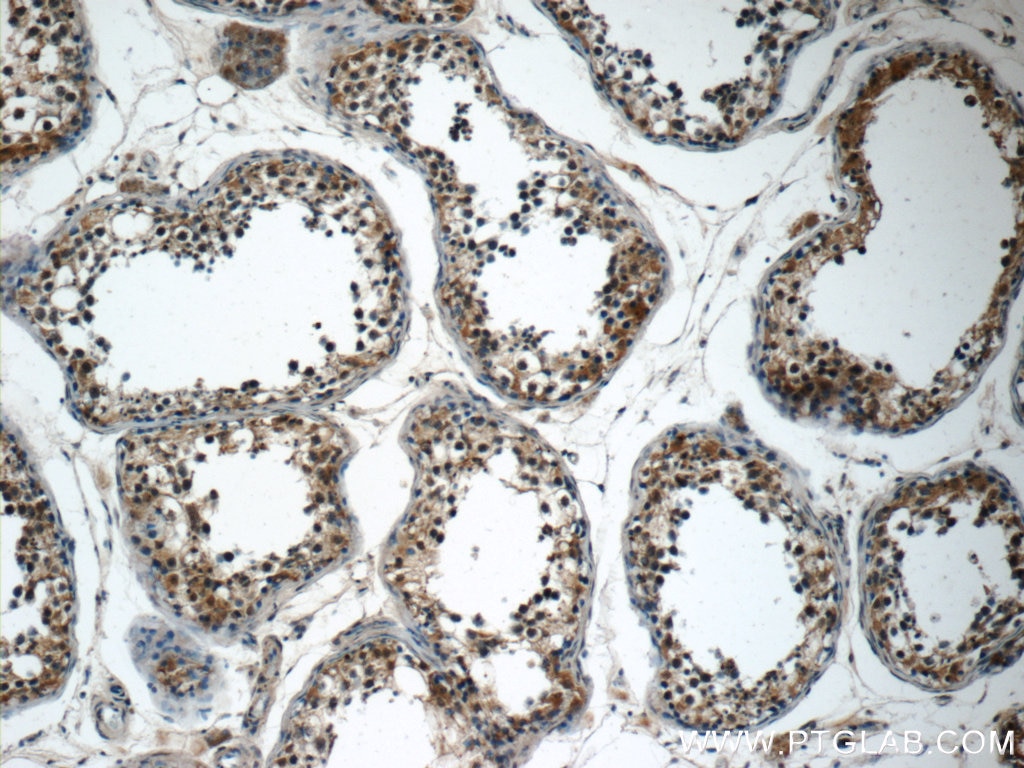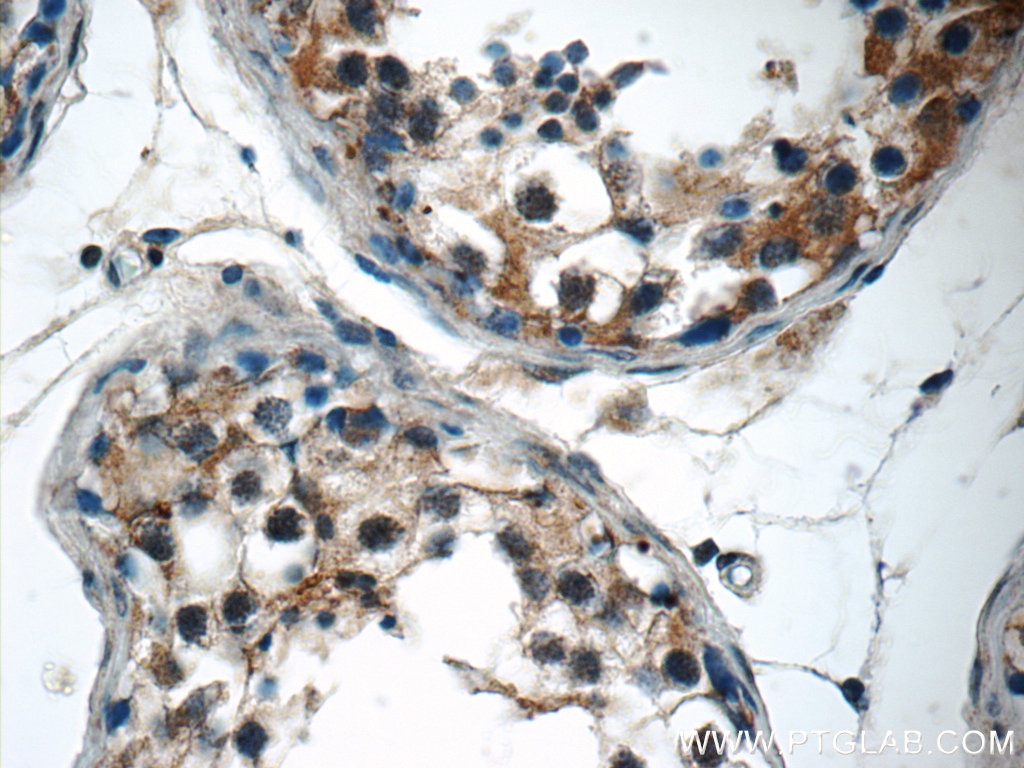Anticorps Polyclonal de lapin anti-SPATA16
SPATA16 Polyclonal Antibody for IHC, ELISA
Hôte / Isotype
Lapin / IgG
Réactivité testée
Humain
Applications
IHC, ELISA
Conjugaison
Non conjugué
N° de cat : 17357-1-AP
Synonymes
Galerie de données de validation
Applications testées
| Résultats positifs en IHC | tissu testiculaire humain il est suggéré de démasquer l'antigène avec un tampon de TE buffer pH 9.0; (*) À défaut, 'le démasquage de l'antigène peut être 'effectué avec un tampon citrate pH 6,0. |
Dilution recommandée
| Application | Dilution |
|---|---|
| Immunohistochimie (IHC) | IHC : 1:20-1:200 |
| It is recommended that this reagent should be titrated in each testing system to obtain optimal results. | |
| Sample-dependent, check data in validation data gallery | |
Informations sur le produit
17357-1-AP cible SPATA16 dans les applications de IHC, ELISA et montre une réactivité avec des échantillons Humain
| Réactivité | Humain |
| Hôte / Isotype | Lapin / IgG |
| Clonalité | Polyclonal |
| Type | Anticorps |
| Immunogène | SPATA16 Protéine recombinante Ag10637 |
| Nom complet | spermatogenesis associated 16 |
| Masse moléculaire calculée | 569 aa, 65 kDa |
| Numéro d’acquisition GenBank | BC034496 |
| Symbole du gène | SPATA16 |
| Identification du gène (NCBI) | 83893 |
| Conjugaison | Non conjugué |
| Forme | Liquide |
| Méthode de purification | Purification par affinité contre l'antigène |
| Tampon de stockage | PBS with 0.02% sodium azide and 50% glycerol |
| Conditions de stockage | Stocker à -20°C. Stable pendant un an après l'expédition. L'aliquotage n'est pas nécessaire pour le stockage à -20oC Les 20ul contiennent 0,1% de BSA. |
Informations générales
SPATA16, also named as NYD-SP12, belongs to the SPATA16 family. It is involved in the formation of sperm acrosome, which implicated its potential role in spermatogenesis and sperm-egg fusion. SPATA16 localizes to Golgi apparatus and is primarily expressed in testis, with lower levels found in kidney and pancreas.
Protocole
| Product Specific Protocols | |
|---|---|
| IHC protocol for SPATA16 antibody 17357-1-AP | Download protocol |
| Standard Protocols | |
|---|---|
| Click here to view our Standard Protocols |



